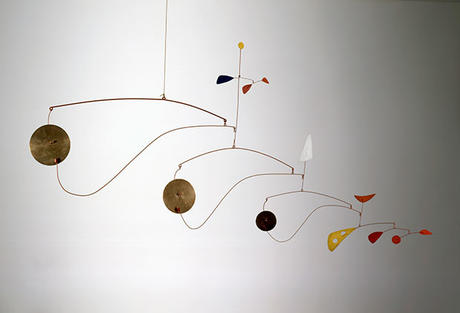Julie Rafalski
In Slight Motion
The viewer suddenly becomes aware of him/herself. Each step might cause a slight movement of air, setting the fragile work in motion and establishing a precarious situation.
Mostly though these contraptions move of their own accord in their own invisible orbits, sometimes like birds circling above a lake, sometimes like heavy wooden clocks.
Each work is attuned to the viewer's location and has a unique relationship with every viewer. With each step you take the work changes shape, sometimes disappearing into a foreshortening, sometimes lining up like a printed pattern.
The walls around the works become theatrical backdrops. The shadows on the walls move too- making the whole room become a little more unstable. Shadows, which are usually neatly tucked away behind a frame or under a plinth, or cancelled out by spotlights come to the fore.
Like tree branches, bridges or a glistening sea in the distance, they are always in slight motion that is measured and unexpected.

Alexander Calder, Triple Gong, 1948